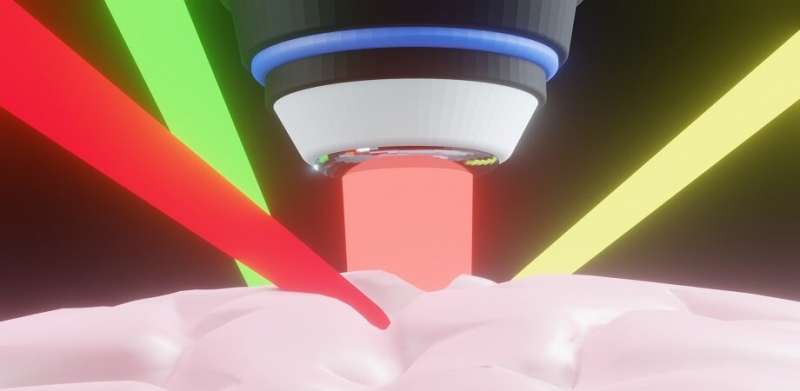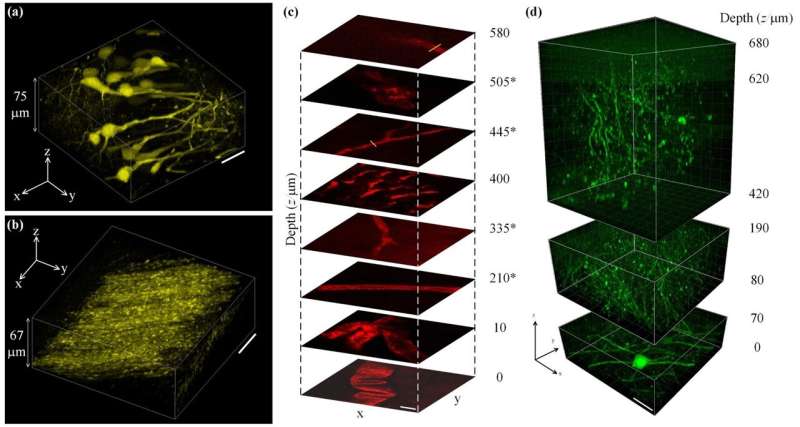High-performance 937-nm laser lets scientists see deeper with lower power

Two-photon microscopy (2PM) plays a reliably efficient role in noninvasive deep-tissue imaging in biomedical investigation. Since the invention of the two-photon microscope at the end of the 20th century, there has been a steady flow of related research advancing 2PM—from fluorophores to imaging methods and applications—in the fields of biochemistry and medicine.
How to image deeper tissues has been a great challenge in two-photon imaging. Laser sources can potentially address that challenge. However, the traditional Ti:sapphire mode-locked laser for two-photon imaging is limited by its high repetition frequency and cannot provide the high pulse energy needed for deep tissue imaging at low exposure power. The fiber laser overcomes the high repetition rate conveniently by adding a few dozen meters of fibers in the cavity, but in some cases it suffers from low gains and low signal-to-noise ratio (SNR).
Recently, as reported in Advanced Photonics Nexus, researchers from Kenneth Wong's Omega Group at University of Hong Kong (HKU) developed a high-performance laser as a new kind of light source for multiphoton microscopy. They reported a 937-nm laser, frequency doubled from an all-fiber mode-locked laser at 1.8 μm, with a low repetition rate of ~9 MHz and a high SNR of 74 dB.
The novel 937-nm laser source relies on self-phase modulation in the single-mode fiber to simultaneously boost the 1.8 μm power and compress the pulse width. The 937-nm laser design is suitable for high-sensitivity deep-tissue imaging of multiple fluorescence proteins. The laser light source provides two-photon excitations on multiple biological tissue types. The penetration depth demonstrated with a mouse brain reached 620 μm, revealing the capability of this technique for deep tissue imaging. The researchers also conducted second-harmonic generation (SHG) imaging, demonstrating label-free imaging and initially validating the potential of this light source for multimodal imaging applications.

Thanks to its low repetition frequency and high signal-to-noise ratio, the light source requires only 10 mW of power to image tissue at depths of over 600 µm, significantly lower than the 40-MHz fiber laser, which requires approximately 200-mW power at a similar depth. This greatly reduces photobleaching and photodamage in imaging, improving the depth of tissue imaging and safety in live (in vivo) imaging.
This work will facilitate greater insights into deep tissue imaging for research and biomedical applications. Postdoctoral fellow at HKU and corresponding author Tian Qiao remarks that "this novel high-SNR 937-nm laser source achieves a good balance between sensitivity, penetration depth, and imaging speed for two-photon imaging. Its great performance in two-photon imaging indicates its exciting potential for biological investigations, such as in vivo deep-tissue imaging and multimode imaging."
More information: Hongsen He et al, Deep-tissue two-photon microscopy with a frequency-doubled all-fiber mode-locked laser at 937 nm, Advanced Photonics Nexus (2022). DOI: 10.1117/1.APN.1.2.026001
Provided by SPIE





















